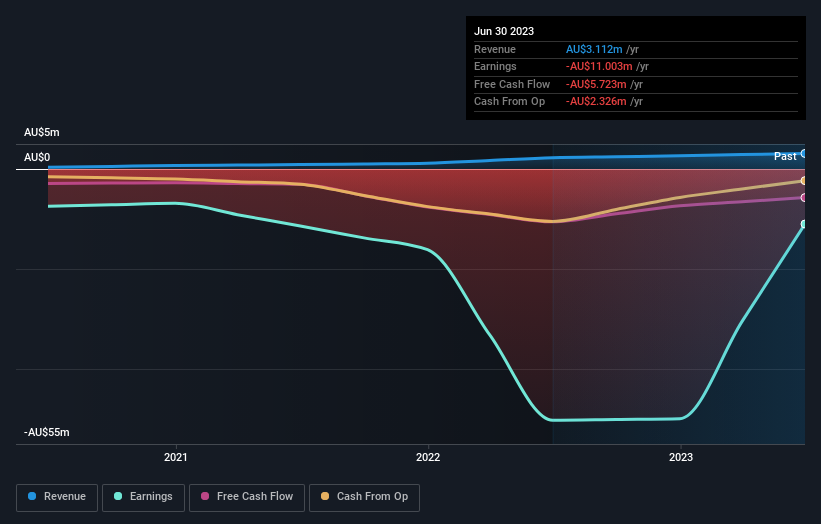Spenda (ASX:SPX) delivers shareholders favorable 12% CAGR over 5 years, surging 29% in the last week alone

Generally speaking the aim of active stock picking is to find companies that provide returns that are superior to the market average. And while active stock picking involves risks (and requires diversification) it can also provide excess returns. For example, long term Spenda Limited (ASX:SPX) shareholders have enjoyed a 80% share price rise over the last half decade, well in excess of the market return of around 26% (not including dividends). On the other hand, the more recent gains haven't been so impressive, with shareholders gaining just 29%.
Since it's been a strong week for Spenda shareholders, let's have a look at trend of the longer term fundamentals.
See our latest analysis for Spenda
Given that Spenda didn't make a profit in the last twelve months, we'll focus on revenue growth to form a quick view of its business development. Shareholders of unprofitable companies usually expect strong revenue growth. That's because fast revenue growth can be easily extrapolated to forecast profits, often of considerable size.
For the last half decade, Spenda can boast revenue growth at a rate of 47% per year. Even measured against other revenue-focussed companies, that's a good result. While the compound gain of 12% per year is good, it's not unreasonable given the strong revenue growth. If you think there could be more growth to come, now might be the time to take a close look at Spenda. Of course, you'll have to research the business more fully to figure out if this is an attractive opportunity.
You can see below how earnings and revenue have changed over time (discover the exact values by clicking on the image).

Take a more thorough look at Spenda's financial health with this free report on its balance sheet.
A Different Perspective
It's good to see that Spenda has rewarded shareholders with a total shareholder return of 29% in the last twelve months. That's better than the annualised return of 12% over half a decade, implying that the company is doing better recently. In the best case scenario, this may hint at some real business momentum, implying that now could be a great time to delve deeper. It's always interesting to track share price performance over the longer term. But to understand Spenda better, we need to consider many other factors. Even so, be aware that Spenda is showing 5 warning signs in our investment analysis , and 2 of those don't sit too well with us...
Of course Spenda may not be the best stock to buy. So you may wish to see this free collection of growth stocks.
Please note, the market returns quoted in this article reflect the market weighted average returns of stocks that currently trade on Australian exchanges.
New: Manage All Your Stock Portfolios in One Place
We've created the ultimate portfolio companion for stock investors, and it's free.
• Connect an unlimited number of Portfolios and see your total in one currency
• Be alerted to new Warning Signs or Risks via email or mobile
• Track the Fair Value of your stocks
Have feedback on this article? Concerned about the content? Get in touch with us directly. Alternatively, email editorial-team (at) simplywallst.com.
This article by Simply Wall St is general in nature. We provide commentary based on historical data and analyst forecasts only using an unbiased methodology and our articles are not intended to be financial advice. It does not constitute a recommendation to buy or sell any stock, and does not take account of your objectives, or your financial situation. We aim to bring you long-term focused analysis driven by fundamental data. Note that our analysis may not factor in the latest price-sensitive company announcements or qualitative material. Simply Wall St has no position in any stocks mentioned.
About ASX:SPX
Spenda
Develops and commercializes technology assets that enable the modernization of business IT systems through conversion, migration, and management of server-based legacy data and systems to the cloud in Australia.
Medium-low with adequate balance sheet.

